
Photo paper is different from regular printer paper as it is specifically used for producing rich, vibrant images with sharp details. It comes in various finishes and paper weights, so choosing the ideal printer paper type can greatly affect your print results. In this article, we’ll discuss the differences between other paper types, which printer to use, and the types of photo paper available.
Definition: Photo paper
Photo paper is a specially coated printer paper that is designed for printing high-resolution photographs and images. It typically has a glossy, semi-gloss, or matte finish in order to enhance color vibrancy and detail, which, as its name suggests, makes it ideal for photo-quality prints and especially fine art photography.
Printing and laminating at BachelorPrint
- Vivid colors & sharp details on premium materials
- Print & laminate menus, posters, certificates & more
- Durable lamination to protect your documents of any size
Learn more!
Types
There are several types of photo paper; we listed and explained the most common ones.

When it comes to photo paper, glossy finish is one of the most common types. This shiny finish makes vibrant colors pop and enhances the sharp details of photos. Glossy photo paper makes every picture stand out, especially when framed, on photo walls, or in photo albums. However, unlike other types, fingerprints are particularly visible on photos, and light reflection can create a few challenges.
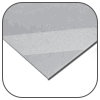
Luster photo paper (or lustre photo paper) can also be referred to as fine-grain gloss as it has a subtle texture and is suitable for everyday prints. This type is also referred to as “satin,” “pearl,” “semi-gloss,” or “e-surface” due to it being halfway between gloss and matte; however, there can be differences between these terms. Moreover, it’s very popular with photographers and hobbyists as it makes color depth and skin colors truly shine and looks professional.
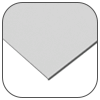
Matte photo paper (or matt photo paper) is especially suited for photo books since it is more robust and less sensitive to fingerprints. Its surface doesn’t create any reflection, and it tends to absorb more ink, offering contrasting images, in particular when it comes to pastel colors, black and white printing, or photos with dark tones. It not only makes images and photos look more professional, but it’s also more budget-friendly compared to other photo paper finishes.

Metallic photo paper has slightly less glare than glossy paper and more than luster paper, but it is definitely an eye-catcher. It makes photos shimmer with an almost luminescent quality, which can make them look more real and bolder. Its photo results are bright and vibrant, making it ideal for colorful landscapes and cityscapes; although, skin color might not turn out to be accurate when taking portraits.
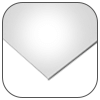
Pearl photo paper (or pearlescent photo paper) has a unique pearlescent sheen, while still being pretty non-reflective. It almost has a similar type of finish to satin, but with a textured feel. Pearl photo paper looks great with pastel colors and watercolor, which makes it a great choice for artistic projects, photo albums, and fine art prints.
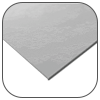
This type of photo paper reflects very little light on its surface, yet still creates dynamic photos, especially when it comes to bright tones like yellow and red. Satin photo paper is seen as a middle ground between glossy and matte finishes and is ideal for portraits and action photos.
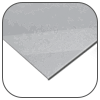
Although semi-gloss and luster are often used interchangeably, they are not the same finish. They give the same results when it comes to color printing, but the texture of semi-gloss is less pronounced than the deeper texture of luster photo paper. When it comes to black and white printing, semi-gloss is typically a preferred choice, but it all comes down to preference in the end.
Characteristics
While there are many common printer paper characteristics worth knowing, here we’ll focus specifically on those that matter most for photo paper, such as common weight, aspect ratio, and size.
Paper weight
When buying photo paper, the weight is important, as not every weight is compatible with every printer, which can cause paper jams. Thicker photo paper is also considered more luxurious and professional than cheaper, thin paper, especially when it comes to the keepsake value of the print. Paper weight is measured in grams per square meter (gsm) or pounds (lb).
Lightweight photo paper ranges from 120 to 150 gsm and is a great choice for bulk printing or a tight budget. This paper weight is typically used for brochures and casual prints at home that require high-quality images while still not being too expensive.
Midweight paper starts at 150 to 250 gsm and is the most common photo paper used in image reproduction without looking too unprofessional. Prints that are intended for framing, display, or mounting are typically 180-200 gsm, as the heavier weight adds to their keepsake value and is thus more durable.
For photo paper, heavyweight ranges from 200 to 300 gsm and is perfect for keepsakes. Photo paper in that weight range includes many types of cards, like invitation cards and greeting cards, gallery images, and more high-quality prints.
Heavier paper can handle more ink, which makes colors look richer and details brighter. New printers should be able to print up to 300 gsm; however, older models might not be compatible with papers heavier than 280 gsm.
Photo papers that are heavier than 300 gsm are typically used for fine art and photo art papers, including canvas sheets, textured art papers, etc. These papers are quite expensive and are most likely not needed for the general audience.
Aspect ratio
Aspect ratio plays an important factor in photography as it refers to the proportional relationship between the width and height of an image. Many photographers use compositional guidelines like the Rule of Thirds and the Golden Ratio (1.618:1) to create visually appealing images.
Ratio is also a key factor when selecting the right photo paper for printing because it determines how well an image fits on the paper without stretching or cropping. So, let’s look at common aspect ratios used in photography and printing.
The 1:1 ratio represents a square as it means that the image’s width and height are equal. This aspect ratio is popular for square images, profile pictures, and creative or minimalist compositions like highlighting symmetry in architectural photography. Square photo papers or prints are ideal for maintaining this format without cropping or stretching of the image.
The 3:2 aspect ratio is the standard for 35 mm film and many DSLR and mirrorless cameras. Commonly used in digital photography, this ratio allows for decent cropping in post-processing and provides a great balance for portraits and landscapes. It’s a great aspect ratio for macro photography.
The 3:4 ratio is widely used in photography and digital displays, especially for images in portrait orientation. This aspect ratio offers a perfectly balanced composition that works well for portraits, headshots, and vertical objects.
The 4:3 aspect ratio is common in compact digital cameras, tablet screens, and older television displays. It’s also a practical ratio for displaying photos on screens and architectural and macro photography.
The 4:5 ratio is a vertical (portrait) format that is slightly taller than a square. Since videos are more immersive and attention-grabbing in vertical format, Instagram changed their grid layout from a 1:1 to a 4:5 aspect ratio in 2025, making this ratio ideal when sharing images on social media.
The 5:7 aspect ratio is a popular choice for portraits and framing as it offers a slightly wider format than 4:5 that suits a variety of image compositions.
The 16:9 aspect ratio is a wide, landscape format commonly used in photography for panoramic shots or wide compositions. It’s ideal for images that emphasize horizontal space, such as landscapes or group photos, as well as Instagram Stories, Reels, and TikToks for social media.
Paper size
To avoid cropping or distortion when printing your photos, it’s important to match your image’s aspect ratio to the paper size. Here’s a quick reference chart for common photo paper sizes and some of their corresponding aspect ratios.
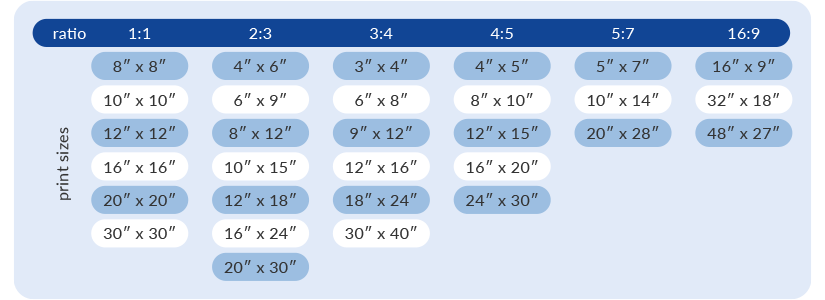
Printers for photos
There are many different types of printers to choose from, but not every printer can handle every photo paper or have the right specifications for high-quality and color-accurate photo printing. Inkjet printers (and ink tank printers) are generally recommended for photo printing since they use liquid printing ink and can produce smooth gradients and rich color depth by spraying tiny droplets of ink onto the paper.
To get the best results, it’s important to fine-tune your printer settings properly. Use the highest resolution available, select the appropriate photo paper type in the printer options, and enable features like color management or photo enhancement, if available, to take full advantage of your printer’s color gamut and supported color systems. Moreover, using quality photo paper designed for inkjet printing will help your photos maintain sharpness and color accuracy.
Recommended printer setting if available:
- Paper Type/Media: Photo Paper Glossy, Photo Paper Matte, Photo Paper
- Print Quality: Max DPI, 300 DPI, Photo, 1440 DPI, High, or Best
- Color Mode: RGB for color printing or “Grayscale” for black & white
Proper maintenance, such as regularly cleaning print heads and ink cartridges, can also improve printer longevity and image quality when printing at home. Also, make sure that you store your images in a dry place away from direct sunlight to prevent them from fading. While it’s tempting to use cheaper alternatives, the quality of your ink and paper will affect the outcome of your photo prints. So, if possible, invest in premium photo paper and ink, especially if you intend to keep them long-term.
Photo paper vs. glossy paper
Photo paper and glossy paper are terms that can easily get mixed up. Glossy paper is a general term for paper with a reflective finish, e.g., glossy cardstock and brochures both have a glossy finish. On the other hand, photo paper specifically refers to paper that is designed for printing high-quality photos, which can also be glossy.
The key difference is that photo paper is typically acid-free, meaning that it is designed to preserve images better over time. It often has special coatings or chemicals, which result in vibrant colors and crisp details. This makes it pricier than, for example, cardstock, which is made from natural materials like wood pulp and clay.
While glossy cardstock can handle printing, it’s not optimized for photo printing like photo paper is. It’s better suited for things like embossing, stamping, or other craft activities that don’t require the fine detail and longevity that photo paper offers.
Printing services at BachelorPrint
- Individual solutions & personal support
- High print quality & fast production times
- Wide range of print products for every need
Learn more!
FAQs
It depends on the type of finish you prefer and how long you want the prints to last. Glossy photo paper is very vibrant and ideal for bright images like portraits or landscapes. If you prefer a more subdued look, matte photo paper works well for black-and-white photos or fine art prints. If professionalism is needed, satin or luster papers find themselves between glossy and matte finishes, combining minimal glare and rich color depth.
You can use photo paper in most inkjet printers. However, you might need to adjust your printer settings and ensure that the paper type and size are compatible with your printer. Laser printers aren’t ideal for photo printing since they use toner instead of ink, which doesn’t absorb well into photo paper.
Glossy paper refers to any paper that has a reflective surface, typically used for brochures, promotional materials, or photos. However, photo paper specifically refers to paper that is designed for printing photographs, and it can come in numerous varnishes, including glossy, matte, or satin. Photo paper is coated with chemicals so that images are of higher quality, have better color reproduction, and have faster drying times.
- Load the photo paper into the printer’s paper tray.
- Open the print settings on your computer or device.
- Select “Photo Paper” or the specific type of photo paper you’re using.
- Adjust the print quality to the highest available resolution (usually “Best” or “High Quality”).
- Make sure that any features like color management or photo enhancements are enabled.
That depends on your personal preferences.
- Satin photo paper has a slight sheen but offers rich colors and detail without the high shine of glossy paper. It’s very popular with professional photographers due to its true-to-life colors.
- Matte photo paper has no gloss or shine, which results in a more muted, soft finish. It’s great for artistic prints, black-and-white photography, or when you want to reduce reflections. Matte paper also tends to be fingerprint-resistant.
In terms of composition, the Golden Ratio (1.618:1) is considered the most visually pleasing and is found in nature, art, photography, and architecture. The so-called Golden Spiral divides the image into sections so that you can place focal points along the spiral’s path, leading the viewer’s eye naturally through the image. Other than that, the 3:2 aspect ratio is commonly used for photographs.